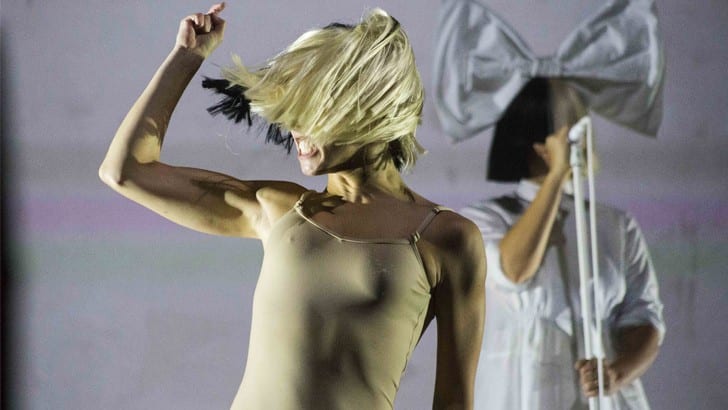
Over the three years since its inception, Boston Calling has spent most of its time trying to find a middle ground between genres. From early nabs like Kendrick Lamar and fun. in its beginning years to acts like The Replacements and Pixies later on, it caters to a wide range of viewers, offering something for everyone without ever leaning too strongly in one direction. Its passivity primed for success, a safe bet. What separates one rendition of the festival from another, then, is what the musicians bring to the stage. If they go above and beyond, those unfamiliar or unaffectionate towards their work will then be won over by an artist they otherwise had no interest in.
The formula is straightforward, the type of obvious calculation that all festivals should require of its acts, but—given extensive touring routes, weather, drama, sound issues, and so on—can’t be enforced because fate plays too big a hand. So Boston Calling, a festival of short sets that leap from dub to indie rock to radio pop to grunge to rap, must trust in a musician’s interpretation of performing. Friday’s miniature line-up—Lisa Hannigan, Sufjan Stevens, and Sia—split itself evenly when it came to defining the best way to deliver music in a live setting.
For Lisa Hannigan, bringing her music to life meant placing honesty as the helm. The Irish singer-songwriter best known for her time in Damien Rice’s band proved her solo career is worth following. With three solo albums to her name, she had a range of material to pull from. While it’s easy to find some of those numbers boring, the mandolin or ukulele losing its charm when performed without pop measures, Hannigan changed moods with each song to keep things varied. A no-frills performance places the emphasis on the music. In her eyes, that’s the best way to offer work to fans and new listeners alike – and with help from The National’s Aaron Dessner, that worked for the most part.
Then comes an act like Sufjan Stevens. Fresh off the dark LP of last year, Carrie & Lowell, Stevens traded in somber songs about death for the electro-dance of 2010’s Age of Adz. Almost six years later, the folk singer-songwriter was finally able to dance through songs like “I Walked”, “Vesuvius”, and “I Want to Be Well” without the awkward stiffness of that album’s tour. The neon tape outfits were updated, the aluminum foil DIY spaceships were cleaner, and disco balls were shinier. If onlookers needed a sign that he wasn’t interested in sticking to his folk tag, him repeatedly smashing a banjo after the first song was a good indication of what was to come. Backup dancers covered in stripped streamers and children’s masks loosened the choreography, dancing with the joy of two best friends who don’t penalize the other’s petite mistakes, including Stevens’. He pleased the crowd with older hits (“Seven Swans”, “Chicago”, “Come On! Feel the Illinoise!”) and slow jam-tinged takes on newer ones (“Should Have Known Better”, “All of Me Wants All of You”), eventually bursting into a nonstop vomit of balloons and karate moves during “Impossible Soul”. To say the least, it was overwhelming compared to Hannigan. Stevens took the idea of a performance and went into full entertainment mode, opting to put on a show, complete with flaws, so long as he kept that grin up for the whole show. With a quick shoutout to Kanye West and name-dropping a Beyonce lyric, he seemed giddy and truly happy, making the most of his set-time—the longest of the evening—without worrying about the usual stresses that bear him down.
When it comes to performing, no one took it to heart like Sia. The popstar ran head-on into the meaning, unrolling a massive production heavily dependent on pre-recorded visuals. With a comically large bow atop her head, the iconic black and white wig, and a long white dress, Sia stood off to the side of the stage to sing each cut with vocal precision and physical rigidity. Screens on each side of the stage appeared to mirror what was happening onstage, but the camera quality and lighting didn’t quite match up. No, that wasn’t Kristen Wiig or Paul Dano onstage. No, that wasn’t child prodigy Maddie Ziegler either. Did it matter? It’s one thing to feel like “Cheap Thrills” and “Elastic Heart” sound so much better when there’s performance art taking place immediately in front of you onstage. It’s another to feel like it doesn’t count because less-famous dancers are standing in. Music is meant to move and performing is meant to entertain. Sia’s set did both, but the authenticity some hope for from live sets took shape in a different way. There’s much to be said for an artist who can match up the tempo of their songs and the bends of each dancer to those taking place on a screen, nevertheless one they aren’t watching. Feeling gipped by her use of pre-recorded visuals shouldn’t detract from her set, at least not fully.
So what’s the best way to deliver a performance, if there is one at all? It depends who you ask – and who’s listening. But perhaps, yet again, that’s Boston Calling’s strength. There’s too varied a lineup to pit one act against the other, guaranteeing festivalgoers a fulfilling experience no matter who they originally purchased tickets to see. If everyone feels catered towards at some point, then everyone was served, and a full tummy is a pleasant feeling, especially when not overstuffed.
